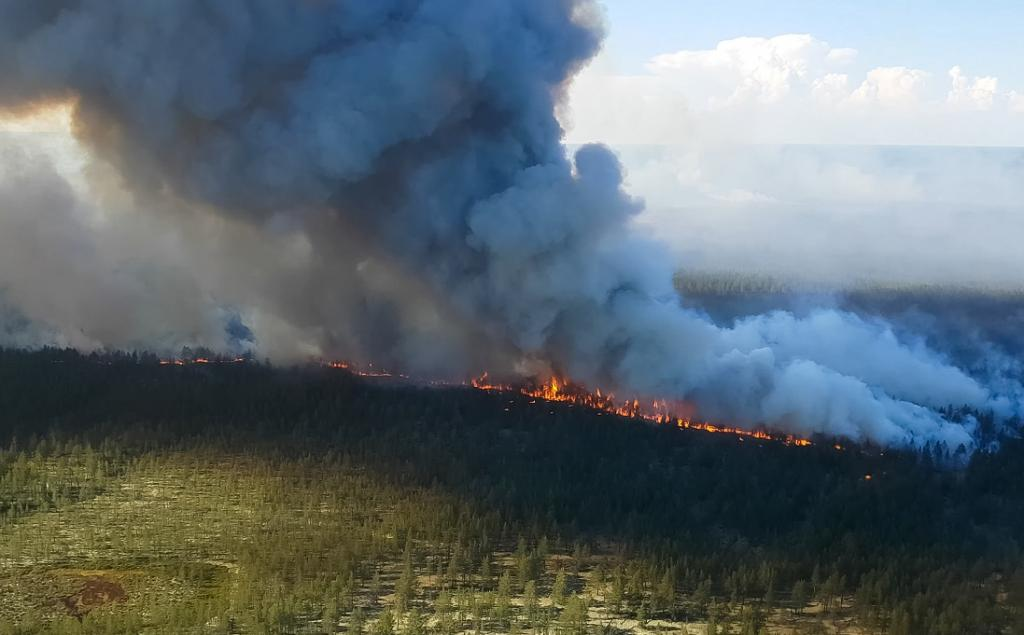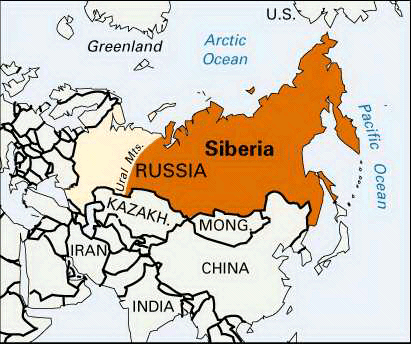SIBERIA

Copyright infringement not intended
Context: Irkutsk region in Siberia, along with Jewish Oblast and Khabarovsk Krai, declared a state of emergency due to widespread forest fires.
About Siberia
- Siberia is a vast and geographically diverse region located in Russia, covering a significant portion of the country's landmass.
- West Siberian plain is a vast expanse of low-lying terrain characterized by extensive swamplands. It is drained by major rivers like the Ob and Yenisey, which play crucial roles in the region's hydrology and transportation.
- Lake Baikal is a unique geographic feature of Siberia. It is the deepest and oldest freshwater lake in the world, known for its stunning beauty and rich biodiversity.
Climate
- Siberia experiences an extreme continental climate with long, bitterly cold winters and short summers. Minimum temperatures can plummet to extremely low levels, especially in northern regions like Sakha (Yakutia), where temperatures as low as −68 °C have been recorded.
- Precipitation is generally low in Siberia, and the climate becomes progressively harsher and drier towards the east. The vast expanses of Siberia experience distinct seasonal variations and are subject to climatic influences from the Arctic and Pacific regions.
Vegetation Zones
- Tundra: The northernmost parts of Siberia are covered by tundra, characterized by low-lying vegetation, permafrost (permanently frozen ground), and harsh conditions that limit plant growth.
- Taiga (Swampy Forest): The predominant vegetation zone in Siberia is the taiga, which consists of dense coniferous forests interspersed with swamps and wetlands. This biome supports a diverse range of wildlife adapted to cold climates.
- Forest-Steppe and Steppe: In the southwestern parts of Siberia and in intermontane basins in the south, the landscape transitions to forest-steppe and steppe zones, characterized by a mix of forested areas and grasslands.
Natural Resources
- Siberia is rich in natural resources, including vast deposits of coal, petroleum, natural gas, diamonds, iron ore, and gold. These resources have played a crucial role in Russia's economic development and industrial growth.
- Mining and manufacturing activities have expanded rapidly in Siberia, particularly in the latter half of the 20th century, leading to the development of major industries producing steel, aluminum, machinery, and other products.

Source:
|
PRACTICE QUESTION Q. Authorities in the "Irkutsk Oblast" recently declared a state of emergency as a massive forest fire raged. In which nation Irkutsk Oblast is located? A) Japan B) USA C) Russia D) Sweden Answer: C |




1.png)
